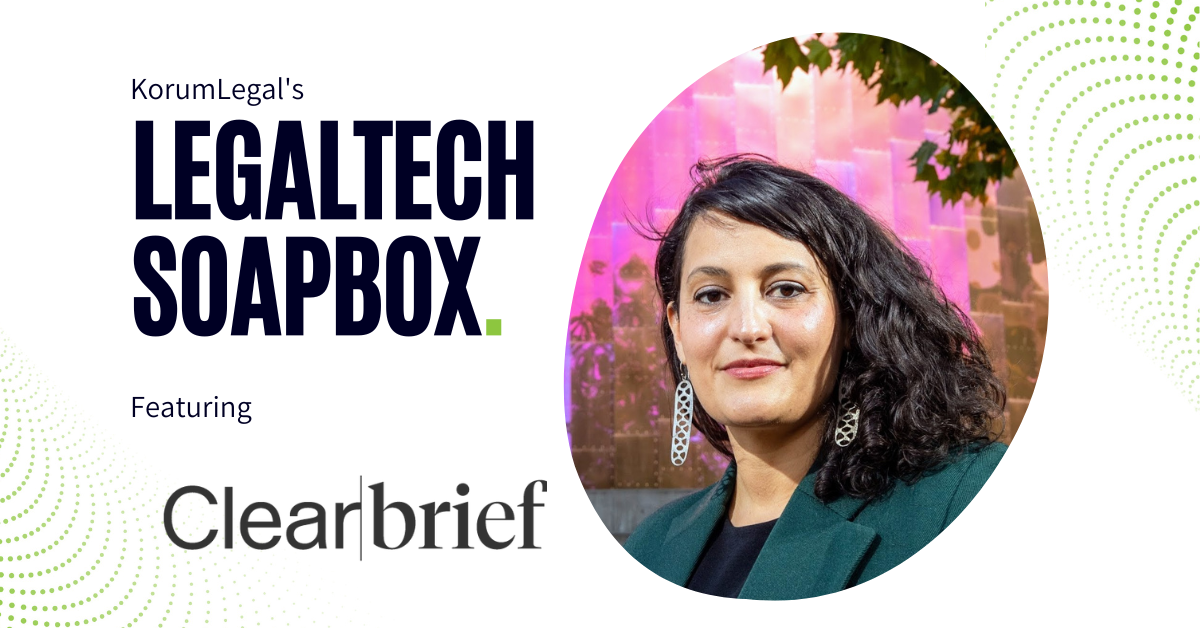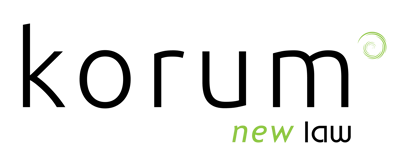LegalTech Soapbox: Improve your daily operations with Clearbrief.

1. Hi Jacqueline Schafer, tell us the story behind Clearbrief.
I started learning about AI and natural language processing when I was in-house counsel at a national child welfare nonprofit. At first, I was inspired to learn about data science as part of my day job advising the data science and research teams at the nonprofit. I ordered books about AI and how it was being applied in adjacent fields like healthcare, which got me thinking creatively about how AI could impact the child welfare space. This was around 2018-2019.
I started writing a law review article about my ideas for applying AI to the child welfare system, which was eventually published (after getting rejected by one academic cycle)!
As part of that research, I realised that AI was going to have a profound impact on the core tasks that litigators perform around legal writing. I decided to quit my job and focus on building a company - a risk I felt ready to take after years of taking small steps in that direction and learning more about the startup community in Seattle. I was able to build out some initial traction, raise a round of capital, and recruit a brilliant founding team to make the vision come to life. My company now has hundreds of paying legal organisation customers that span the largest global law firms, to courts, government agencies, to global in-house F100 teams.
2. What are the services or products that Clearbrief provides?
Clearbrief is an AI-powered legal writing tool that helps attorneys and investigation teams prepare highly credible legal documents in Microsoft Word. Unlike other AI LegalTech, Clearbrief solves for accuracy because it is built to show the facts and help the writer verify. Clearbrief has won numerous industry awards, including Litigation Product of the Year 2023 at Legalweek.
With our SOC2, Type 2-certified Add-In for Word, in-house internal investigations teams can upload interview notes, emails, and other documents and generate an instant hyperlinked timeline from within Microsoft Word with all dates extracted, event summaries, and links to sources. (Watch a 2-minute video.). Then, with a click of a button, that chronology can be turned into a formatted investigation report outlining all the evidence examined - with hyperlinks after each sentence to the sources, all visible from inside Word.
For teams that are wary of GenAI, Clearbrief also allows users to create an instant table of search hits and relevant information extracted across a massive universe of uploaded evidence. Then with a click, you can make the table in Word hyperlinked and securely shareable with key decisionmakers.
We are also purpose-built for analysing and drafting litigation pleadings and ensuring consistent responses when a company is facing similar lawsuits across many jurisdictions.
Clearbrief integrates seamlessly with document repositories including Relativity, iManage, Netdocs, Box, and others.
3. How does the above optimise the daily operations of an in-house legal team/ law firm?
For large companies where Navex reports regularly come in, or employee relations incidents need investigation, it's challenging for Legal, HR, and Compliance to quickly pull together the facts and write a fair and thorough report that leadership can use for time-sensitive decision making. Clearbrief solves this by quickly turning those emails and other sources into a formatted investigation report with hyperlinks after every sentence to show the evidence, building confidence in the investigation process.
What we've seen across our customer base is meaningful hours saved, improved compliance, and lower outside counsel bills by using Clearbrief. Understanding the critical facts earlier in a pre-litigation situation is helping them avoid costly litigation and nuclear verdicts down the line. It's also helping investigations teams meet their growing investigations workloads when they are unable to add headcount.
4. What do you believe will be the most significant change in how in-house legal teams use technology in the next 10 years?
I think legal teams will require transparency and simple accessibility of evidence in all communications now that generative AI is so ubiquitous. The power of showing your work and the audit trail of evidence (in a way that does not require complex creation of exhibits, but rather is just built into the fabric of our communications) will be critical to build trust.
Lily Evans and Jacqueline Schafe
Aug 21, 2024
Related Posts.
By: Bill Novomisle
Implementing Legal Technology in an efficient way
How should we implement legal technology solutions to truly improve legal operations?
In-house legal departments have been listening to the endless drumbeat of consultants and vendors talking about ..
By: KorumLegal
GC Spotlight: Nicola Raj, General Counsel at Ebiquity
